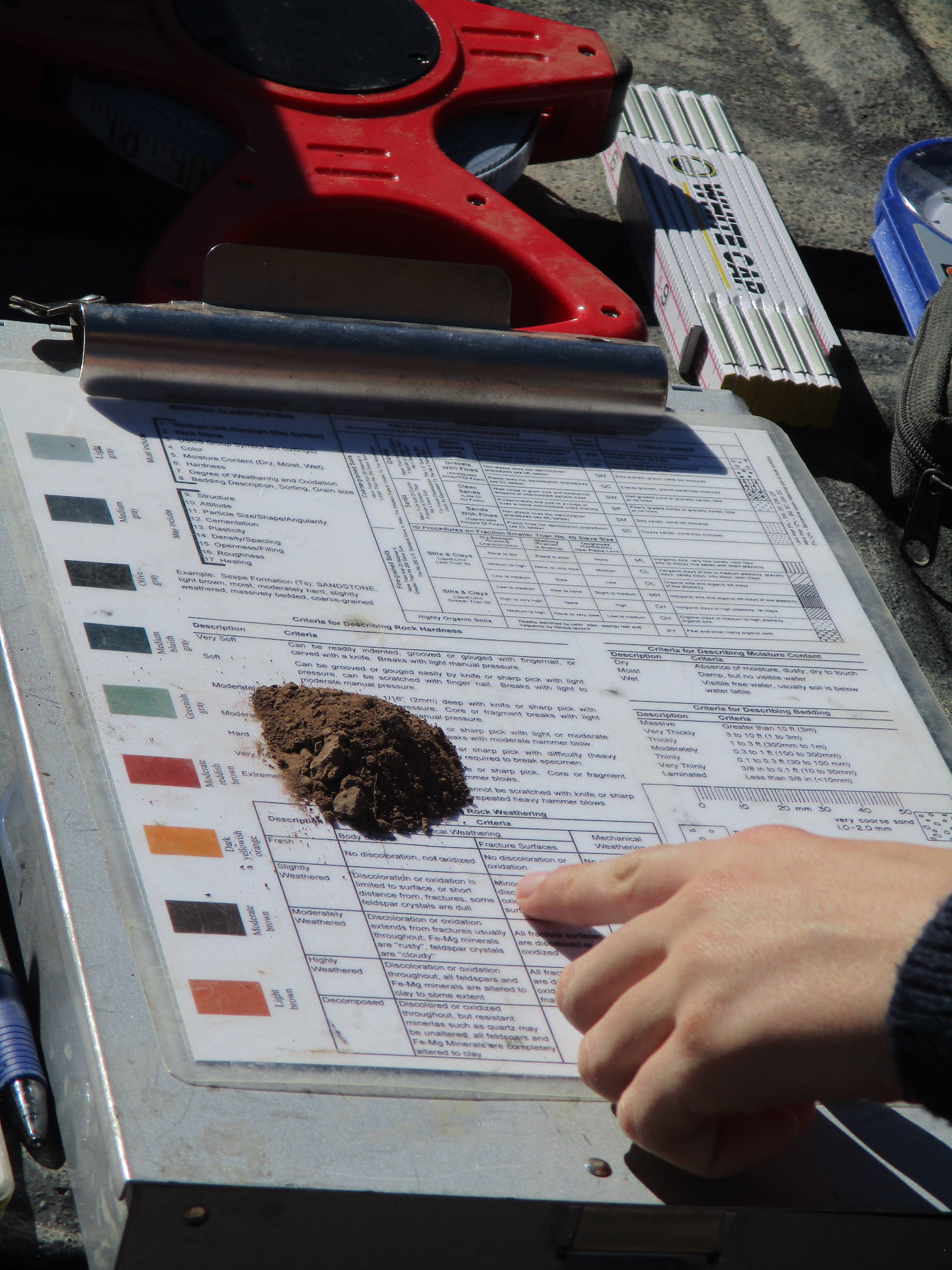Grand County High School student Alexa Stripeika wants to be an engineer, but she’s not sure yet what kind. She’s inspired in part by her dad’s career as an environmental engineer.
“He used to own his own company, so I remember going into his office when I was little,” said Stripeika, recalling being fascinated by the tools she saw there. She’s currently exploring the field of civil engineering through a mentorship program facilitated by the high school’s Career and Technical Education department and local nonprofit Science Moab’s School to Science initiative.
School to Science pairs high school students with local and visiting scientists for internships and job-shadows of varying lengths and degrees of depth. The program is aimed at helping students gain exposure to careers in science, improve their scientific literacy, and prepare for professional life. For mentors, the program can offer a way to inspire the next generation of scientists and researchers while honing mentorship skills. Offering a mentorship can also qualify a scientist for more grant funding opportunities, by showing that their work provides broad positive community impact.
The program was scheduled to begin in the spring of 2021 but was delayed due to COVID-19 precautions. This fall, the program is back on track.
“We are elated to be able to offer a great variety of job shadows and internships with local and visiting scientists for GCHS students throughout the 2021-2022 school year,” said Carrie Schwartz, School to Science program director for Science Moab. “The opportunities are enviable: collecting insects, unearthing fossils, measuring geologic vibrations, running lab experiments, and photographing museum collections, to name a few.” Schwartz is delighted with the positive response from the local science community: 18 scientists have committed to participating, she said, and nine of those are offering mentorships this trimester.
Stripeika is the first student to be placed with a mentor for a trimester-long internship through the School to Science program. Her mentor is Taylor Hall, a geotechnician who founded the company Moab Geotechnical Group.
Hall said he was drawn to the mentoring opportunity because he is grateful for those who mentored him as he moved through his education and began his career. He’s also an adjunct professor at Utah Valley University and enjoys teaching.
Stripeika and Hall met on a sunny September morning at the site of a future subdivision to discuss the role of a geotechnician in a development project. It was their second in-the-field meeting; in an earlier session, they evaluated site conditions at the school campus.
Hall helped Stripeika look at the potential building site through a geotechnician’s perspective, evaluating site concerns and conditions.
“As we look at all this, does anything stand out to you that looks like it would be something that could potentially impact a project?” Hall asked Stripeika. She surveyed the scene and identified a waterway close by that could be a flooding concern and a steep dirt slope that looked unstable. Hall commended her observational skills.
The two looked at descriptions of hazardous soil types, categorized the soil at the site, and measured a slope abutting the property using a tape measure, an inclinometer, and a trigonometric function. It was an information-packed session that covered a range of tools, methods, and considerations relevant to geotechnical engineering. After a dense hour, Stripeika returned to the school campus.
At GCHS, the Career and Technical Education Coordinator Kady Brennan helps facilitate mentor/mentee matches and gives CTE students workshops in skills like resume and cover letter writing, interviewing for jobs, and building online professional profiles.
Brennan has 31 students placed in mentorships with community organizations including Moab Regional Hospital, local radio station KZMU, and the Youth Garden Project. School to Science offers another avenue for students to find mentorships that align with their interests.
At the end of the trimester-long CTE class, successful students earn a “Career Pathway” completion certificate, which, according to the Utah State Board of Education website, is “an industry recognized credential of value.”
Brennan conducts at least one site visit with each student throughout the trimester, but for the most part, scheduling mentor sessions is up to the mentors and mentees. Brennan says it’s a valuable opportunity for teens to learn independence.
“It’s cool to watch them grow in this,” Brennan said.
Sometimes Brennan and her students collaborate to devise a creative internship to suit a student’s interests. For example, an internship at WabiSabi wouldn’t necessarily have to focus on retail but could provide an opportunity to explore business management, marketing, or fundraising.
Similarly, Schwartz said she hopes the School to Science program will attract not just kids devoted to science, but also those who are curious or have complementary interests. She said the program is “perfect for students who love science, but also perfect for students with a great variety of interests: art, design, data, history, hiking, engineering, construction, math, tech, and more.
“We want any students curious to explore science to have the opportunity to actually work alongside scientists—especially students who may not realize the endless ways in which science work overlaps with their other interests, or who might be a bit intimidated by or feel unwelcome in the sciences (as has been the case for many students of color, gender nonconforming students, students with disabilities, and students facing poverty),” said Schwartz.
The School to Science program is an exceptional opportunity not just for students, but also for the community. Schwartz called it “a chance for the community to reimagine itself as a science stronghold.”




